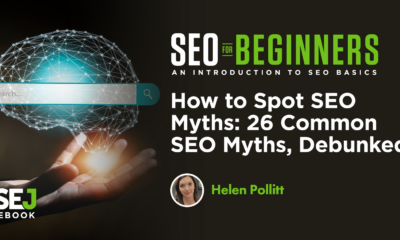TECHNOLOGY
Why You Should Use AI For Hiring

In today’s fast-paced and competitive job market, organizations are continually looking for ways to streamline their hiring procedures and effectively locate the finest individuals.
Artificial intelligence (AI) is a vital tool that has evolved in recent years. Regarding hiring, AI technology may help with everything from speeding up candidate screening to decreasing bias and increasing overall candidate experience. Businesses may optimize their recruitment strategies and make data-driven decisions by harnessing AI’s capabilities, resulting in more effective and successful hires. In this post, we will examine why AI should be considered for hiring, emphasizing its potential to revolutionize how organizations identify and pick talent.
Artificial Intelligence Can Take Your Hiring Strategy to the Next Level

The use of artificial intelligence technologies and algorithms to expedite and improve various parts of the employment process is referred to as AI in hiring. It entails applying machine learning, natural language processing (NLP), data analytics, and other artificial intelligence (AI) tools such as to automate activities, analyze candidate data, and make data-driven hiring decisions. AI in hiring can be used at several stages, including resume screening, applicant sourcing, interview scheduling, candidate evaluation, and even onboarding. Organizations hope to improve the efficiency, objectivity, and effectiveness of their recruitment operations by harnessing AI while minimizing human bias and subjectivity.
Six Reasons to Leverage Artificial Intelligence in Hiring

There are numerous reasons why adopting AI for hiring can be advantageous. Here are some significant benefits:
1. Efficient hiring
According to Vikram Seth, CEO of Ducknowl, “Efficient screening is one of the primary benefits of employing AI in hiring”. When dealing with a large volume of applications, traditional resume screening can be a time-consuming process. AI-powered screening systems can automate this task, reducing the time and effort necessary dramatically. Artificial intelligence algorithms can quickly analyze resumes and applications, extracting pertinent information such as work experience, education, talents, and credentials. These algorithms can be trained to recognize keywords, phrases, and patterns that correspond to job posting requirements.
AI algorithms may develop a shortlist of the most qualified candidates by matching candidate profiles to job descriptions, saving recruiters and hiring managers considerable time. Furthermore, AI screening technologies can prioritize applications based on predetermined criteria, such as specific abilities or years of experience, ensuring that the best candidates receive the most attention. Rather than spending hours on manual screening, recruiters can focus their efforts on reviewing and engaging with the top applicants.
2. Improved applicant matching
Another big advantage of employing AI in hiring is enhanced candidate matching. AI algorithms can analyze and match job requirements with candidate profiles accurately and objectively, resulting in better recruiting decisions. AI systems can use machine learning techniques to find trends and success indicators based on past data.
AI algorithms can learn what attributes and skills are most likely to contribute to success in a particular role by analyzing prior recruiting outcomes and employee performance data. This allows the system to evaluate candidates based on characteristics other than traditional criteria like education and work experience. Furthermore, AI algorithms may evaluate candidates based on a wide range of data points, including talents, certifications, industry-specific expertise, and even soft skills. This all-encompassing approach to applicant matching can lead to more exact and accurate assessments, increasing the likelihood of finding the best fit for a certain role.
Organizations can save time and effort in manually evaluating resumes and qualifications by automating candidate matching with AI. Because AI algorithms make decisions based on objective facts and preset criteria, they can also lessen the potential of human bias impacting the selection process. As a result, organizations may make better informed and more objective hiring decisions that are further aligned with the job needs, resulting in better overall recruitment outcomes.
3. Reduced bias
Using AI in hiring can help greatly reduce prejudice in the recruitment process. Human prejudice, whether conscious or unconscious, has long been a source of difficulty in traditional recruiting practices. AI technologies offer a viable solution to this problem. AI algorithms evaluate candidates using objective criteria and qualifications, eliminating human subjectivity and potential prejudices based on aspects such as gender, color, ethnicity, or age. These algorithms assess candidate suitability using data-driven insights and preset measures, delivering fair and unbiased judgment.
Organizations can combat prejudice in a variety of ways by utilizing AI. To begin, artificial intelligence algorithms can anonymize applicant data by deleting personally identifiable information from resumes and applications. Additionally, biased wording in job descriptions and postings can be found and removed using AI-powered techniques. To ensure diversity and draw a wider range of applications, they can advise different wording.
The use of AI in hiring generally lowers the possibility of unconscious bias and encourages equity and diversity in the selection process. Organizations may create more diverse workforces by using objective and data-driven evaluations that prioritize talent and credentials above unimportant human characteristics.
4. Data-driven insights
The production of data-driven insights is one of the major benefits of adopting AI in hiring. AI technology can analyze vast amounts of data gathered throughout the recruitment process, giving organizations useful information and actionable insights. AI systems can uncover patterns and trends by collecting and analyzing data on candidate profiles, application sources, screening results, interview outcomes, and hiring decisions. AI can analyze data to determine the best sourcing channels, job boards, and recruitment platforms for attracting high-quality individuals. It can also reveal which evaluation methods or interview questions produce the greatest results, allowing organizations to fine-tune their recruitment strategy accordingly.
AI algorithms can uncover trends that correspond with successful hires by reviewing past data on candidate qualifications, experience, and performance. This enables organizations to forecast the probable performance of individuals based on objective facts, allowing for better-informed decision-making. AI algorithms may examine diversity metrics within the candidate pool, allowing organizations to quantify and monitor their progress in fostering diversity and inclusion. The findings of this investigation can help organizations develop measures to enhance diversity and address inequities.
5. Enhanced objectivity
Using AI in hiring provides the benefit of increased objectivity in the recruitment process. Subjective factors such as personal biases, emotions, or unconscious preferences can all influence human decision-making. AI technologies assist in overcoming these constraints and introducing a higher level of impartiality in applicant evaluation. Candidates are evaluated by AI algorithms using predefined criteria and objective metrics. They evaluate qualifications, talents, and experience unbiased by personal prejudices or subjective judgments. This uniformity in evaluating candidates results in more dependable and fair appraisals of their abilities and potential.
AI creates fair possibilities for all candidates by removing human subjectivity. It ensures that each candidate is evaluated on the basis of their relevant qualifications and merits rather than on external circumstances that should not have an impact on their suitability for a role. Furthermore, AI systems can be taught on historical data to learn from previous successful employment outcomes. This enables them to spot trends and success indications that human evaluators may miss. AI algorithms that rely on data-driven insights can provide a more objective assessment of a candidate’s perspective fit for a post.
AI’s increased impartiality in recruiting aids organizations in developing fair and transparent recruitment procedures. It eliminates prejudices, maintains consistent evaluation criteria, and fosters meritocracy. This, in turn, encourages a varied and inclusive workforce in which individuals are chosen based on their skills and talents, resulting in improved overall organizational performance.
6. Cost and time savings
AI-powered algorithms can rapidly screen a high volume of resumes and applications, eliminating the need for recruiters to perform human screening. This technology saves recruiters time and allows them to focus on engaging with the best candidates. Organizations can speed up the hiring process and close productivity gaps created by protracted vacancies by lowering the time spent on screening. AI can help recruit people from a variety of sources, including job boards, social media platforms, and professional networks. Organizations can use AI solutions to automate applicant identification and shortlisting based on established criteria, hence streamlining the candidate sourcing process. This saves time and effort spent on finding qualified individuals, resulting in faster access to competent people.
AI can help to streamline the interview scheduling process by automating the coordination of interview slots between candidates and interviewers. AI-powered systems can analyze availability, preferences, and time zones to recommend the best interview schedules while minimizing back-and-forth contact. This saves administrative time and enhances interview efficiency. Biassed recruiting decisions or poor applicant matches might result in significant consequences for organizations. AI algorithms can assist in decreasing bias by focusing on objective criteria and credentials. Organizations can prevent costly recruiting blunders and associated costs such as turnover costs, rehiring charges, and potential legal issues by enhancing the accuracy of candidate selection.
Summing up
In summary, introducing AI into the hiring process has many advantages that can transform how businesses find and hire talent. A significant number of resumes and applications can be quickly and effectively analyzed and evaluated thanks to the usage of AI in screening. It also enables better candidate matching by utilizing machine learning algorithms to spot successful trends and make informed judgments.
By eliminating subjective judgments, evaluating candidates based on objective criteria, and fostering fairness and diversity, AI also lessens hiring bias. A more equitable outcome is ensured by the increased impartiality of AI algorithms, which guarantee that candidates are evaluated purely on their qualifications and merits. Additionally, AI offers priceless data-driven insights that help recruiters optimize their strategy, make better decisions, and streamline the entire hiring process.
TECHNOLOGY
Next-gen chips, Amazon Q, and speedy S3

AWS re:Invent, which has been taking place from November 27 and runs to December 1, has had its usual plethora of announcements: a total of 21 at time of print.
Perhaps not surprisingly, given the huge potential impact of generative AI – ChatGPT officially turns one year old today – a lot of focus has been on the AI side for AWS’ announcements, including a major partnership inked with NVIDIA across infrastructure, software, and services.
Yet there has been plenty more announced at the Las Vegas jamboree besides. Here, CloudTech rounds up the best of the rest:
Next-generation chips
This was the other major AI-focused announcement at re:Invent: the launch of two new chips, AWS Graviton4 and AWS Trainium2, for training and running AI and machine learning (ML) models, among other customer workloads. Graviton4 shapes up against its predecessor with 30% better compute performance, 50% more cores and 75% more memory bandwidth, while Trainium2 delivers up to four times faster training than before and will be able to be deployed in EC2 UltraClusters of up to 100,000 chips.
The EC2 UltraClusters are designed to ‘deliver the highest performance, most energy efficient AI model training infrastructure in the cloud’, as AWS puts it. With it, customers will be able to train large language models in ‘a fraction of the time’, as well as double energy efficiency.
As ever, AWS offers customers who are already utilising these tools. Databricks, Epic and SAP are among the companies cited as using the new AWS-designed chips.
Zero-ETL integrations
AWS announced new Amazon Aurora PostgreSQL, Amazon DynamoDB, and Amazon Relational Database Services (Amazon RDS) for MySQL integrations with Amazon Redshift, AWS’ cloud data warehouse. The zero-ETL integrations – eliminating the need to build ETL (extract, transform, load) data pipelines – make it easier to connect and analyse transactional data across various relational and non-relational databases in Amazon Redshift.
A simple example of how zero-ETL functions can be seen is in a hypothetical company which stores transactional data – time of transaction, items bought, where the transaction occurred – in a relational database, but use another analytics tool to analyse data in a non-relational database. To connect it all up, companies would previously have to construct ETL data pipelines which are a time and money sink.
The latest integrations “build on AWS’s zero-ETL foundation… so customers can quickly and easily connect all of their data, no matter where it lives,” the company said.
Amazon S3 Express One Zone
AWS announced the general availability of Amazon S3 Express One Zone, a new storage class purpose-built for customers’ most frequently-accessed data. Data access speed is up to 10 times faster and request costs up to 50% lower than standard S3. Companies can also opt to collocate their Amazon S3 Express One Zone data in the same availability zone as their compute resources.
Companies and partners who are using Amazon S3 Express One Zone include ChaosSearch, Cloudera, and Pinterest.
Amazon Q
A new product, and an interesting pivot, again with generative AI at its core. Amazon Q was announced as a ‘new type of generative AI-powered assistant’ which can be tailored to a customer’s business. “Customers can get fast, relevant answers to pressing questions, generate content, and take actions – all informed by a customer’s information repositories, code, and enterprise systems,” AWS added. The service also can assist companies building on AWS, as well as companies using AWS applications for business intelligence, contact centres, and supply chain management.
Customers cited as early adopters include Accenture, BMW and Wunderkind.
Want to learn more about cybersecurity and the cloud from industry leaders? Check out Cyber Security & Cloud Expo taking place in Amsterdam, California, and London. Explore other upcoming enterprise technology events and webinars powered by TechForge here.
TECHNOLOGY
HCLTech and Cisco create collaborative hybrid workplaces

Digital comms specialist Cisco and global tech firm HCLTech have teamed up to launch Meeting-Rooms-as-a-Service (MRaaS).
Available on a subscription model, this solution modernises legacy meeting rooms and enables users to join meetings from any meeting solution provider using Webex devices.
The MRaaS solution helps enterprises simplify the design, implementation and maintenance of integrated meeting rooms, enabling seamless collaboration for their globally distributed hybrid workforces.
Rakshit Ghura, senior VP and Global head of digital workplace services, HCLTech, said: “MRaaS combines our consulting and managed services expertise with Cisco’s proficiency in Webex devices to change the way employees conceptualise, organise and interact in a collaborative environment for a modern hybrid work model.
“The common vision of our partnership is to elevate the collaboration experience at work and drive productivity through modern meeting rooms.”
Alexandra Zagury, VP of partner managed and as-a-Service Sales at Cisco, said: “Our partnership with HCLTech helps our clients transform their offices through cost-effective managed services that support the ongoing evolution of workspaces.
“As we reimagine the modern office, we are making it easier to support collaboration and productivity among workers, whether they are in the office or elsewhere.”
Cisco’s Webex collaboration devices harness the power of artificial intelligence to offer intuitive, seamless collaboration experiences, enabling meeting rooms with smart features such as meeting zones, intelligent people framing, optimised attendee audio and background noise removal, among others.
Want to learn more about cybersecurity and the cloud from industry leaders? Check out Cyber Security & Cloud Expo taking place in Amsterdam, California, and London. Explore other upcoming enterprise technology events and webinars powered by TechForge here.
TECHNOLOGY
Canonical releases low-touch private cloud MicroCloud

Canonical has announced the general availability of MicroCloud, a low-touch, open source cloud solution. MicroCloud is part of Canonical’s growing cloud infrastructure portfolio.
It is purpose-built for scalable clusters and edge deployments for all types of enterprises. It is designed with simplicity, security and automation in mind, minimising the time and effort to both deploy and maintain it. Conveniently, enterprise support for MicroCloud is offered as part of Canonical’s Ubuntu Pro subscription, with several support tiers available, and priced per node.
MicroClouds are optimised for repeatable and reliable remote deployments. A single command initiates the orchestration and clustering of various components with minimal involvement by the user, resulting in a fully functional cloud within minutes. This simplified deployment process significantly reduces the barrier to entry, putting a production-grade cloud at everyone’s fingertips.
Juan Manuel Ventura, head of architectures & technologies at Spindox, said: “Cloud computing is not only about technology, it’s the beating heart of any modern industrial transformation, driving agility and innovation. Our mission is to provide our customers with the most effective ways to innovate and bring value; having a complexity-free cloud infrastructure is one important piece of that puzzle. With MicroCloud, the focus shifts away from struggling with cloud operations to solving real business challenges” says
In addition to seamless deployment, MicroCloud prioritises security and ease of maintenance. All MicroCloud components are built with strict confinement for increased security, with over-the-air transactional updates that preserve data and roll back on errors automatically. Upgrades to newer versions are handled automatically and without downtime, with the mechanisms to hold or schedule them as needed.
With this approach, MicroCloud caters to both on-premise clouds but also edge deployments at remote locations, allowing organisations to use the same infrastructure primitives and services wherever they are needed. It is suitable for business-in-branch office locations or industrial use inside a factory, as well as distributed locations where the focus is on replicability and unattended operations.
Cedric Gegout, VP of product at Canonical, said: “As data becomes more distributed, the infrastructure has to follow. Cloud computing is now distributed, spanning across data centres, far and near edge computing appliances. MicroCloud is our answer to that.
“By packaging known infrastructure primitives in a portable and unattended way, we are delivering a simpler, more prescriptive cloud experience that makes zero-ops a reality for many Industries.“
MicroCloud’s lightweight architecture makes it usable on both commodity and high-end hardware, with several ways to further reduce its footprint depending on your workload needs. In addition to the standard Ubuntu Server or Desktop, MicroClouds can be run on Ubuntu Core – a lightweight OS optimised for the edge. With Ubuntu Core, MicroClouds are a perfect solution for far-edge locations with limited computing capabilities. Users can choose to run their workloads using Kubernetes or via system containers. System containers based on LXD behave similarly to traditional VMs but consume fewer resources while providing bare-metal performance.
Coupled with Canonical’s Ubuntu Pro + Support subscription, MicroCloud users can benefit from an enterprise-grade open source cloud solution that is fully supported and with better economics. An Ubuntu Pro subscription offers security maintenance for the broadest collection of open-source software available from a single vendor today. It covers over 30k packages with a consistent security maintenance commitment, and additional features such as kernel livepatch, systems management at scale, certified compliance and hardening profiles enabling easy adoption for enterprises. With per-node pricing and no hidden fees, customers can rest assured that their environment is secure and supported without the expensive price tag typically associated with cloud solutions.
Want to learn more about cybersecurity and the cloud from industry leaders? Check out Cyber Security & Cloud Expo taking place in Amsterdam, California, and London. Explore other upcoming enterprise technology events and webinars powered by TechForge here.
-

 SEARCHENGINES5 days ago
SEARCHENGINES5 days agoBillions Of Google goo.gl URLs To 404 In The Future
-

 SEO7 days ago
SEO7 days ago26 Common SEO Myths, Debunked
-
SEARCHENGINES4 days ago
Daily Search Forum Recap: July 22, 2024
-

 SEARCHENGINES6 days ago
SEARCHENGINES6 days agoGoogle Core Update Coming, Ranking Volatility, Bye Search Notes, AI Overviews, Ads & More
-

 SEO5 days ago
SEO5 days ago11 Copyscape Alternatives To Check Plagiarism
-

 SEO6 days ago
SEO6 days agoGoogle Warns Of Last Chance To Export Notes Search Data
-

 AFFILIATE MARKETING5 days ago
AFFILIATE MARKETING5 days agoThe Top 5 AI Tools That Can Revolutionize Your Workflow and Boost Productivity
-
SEARCHENGINES3 days ago
Daily Search Forum Recap: July 23, 2024













